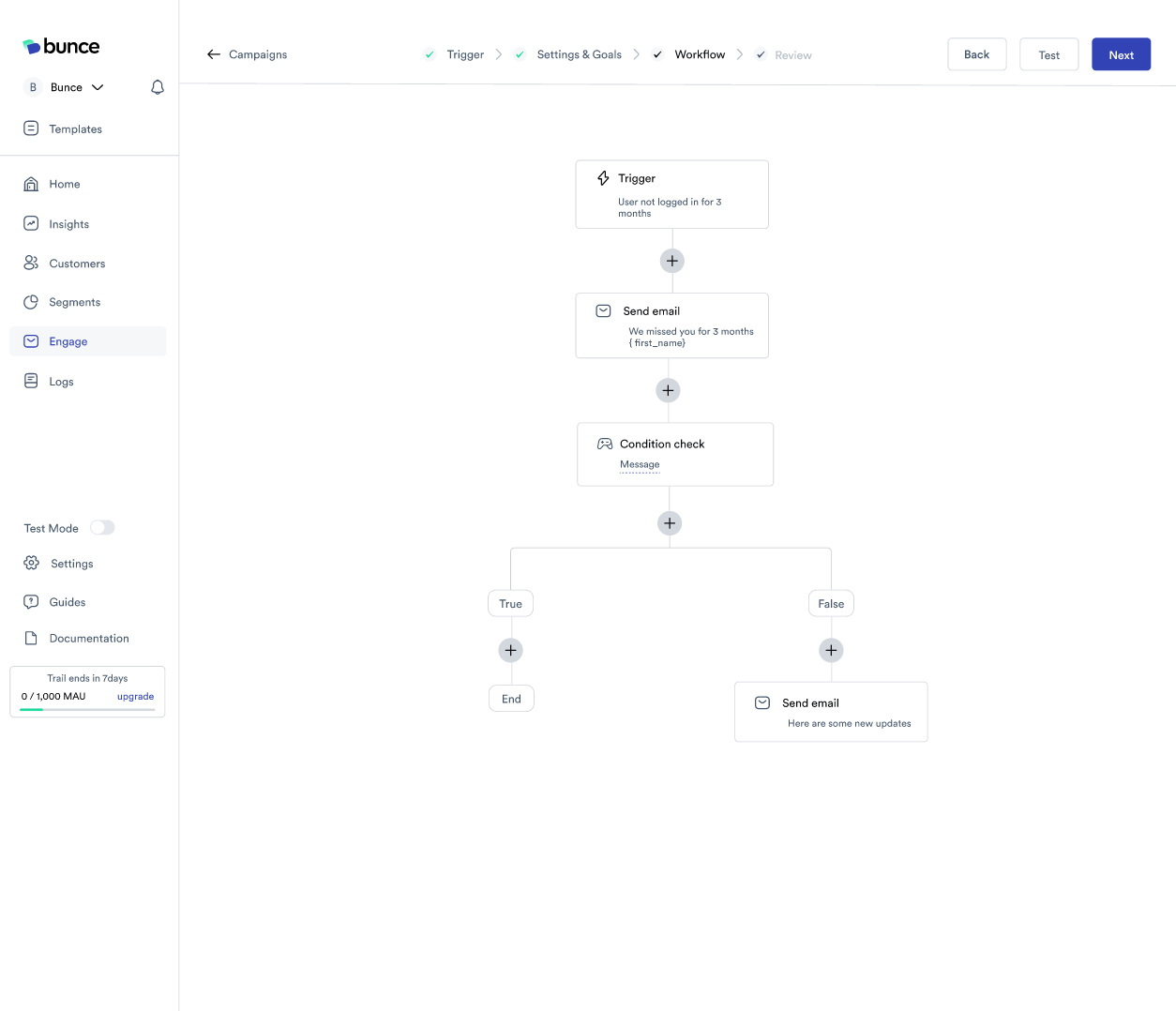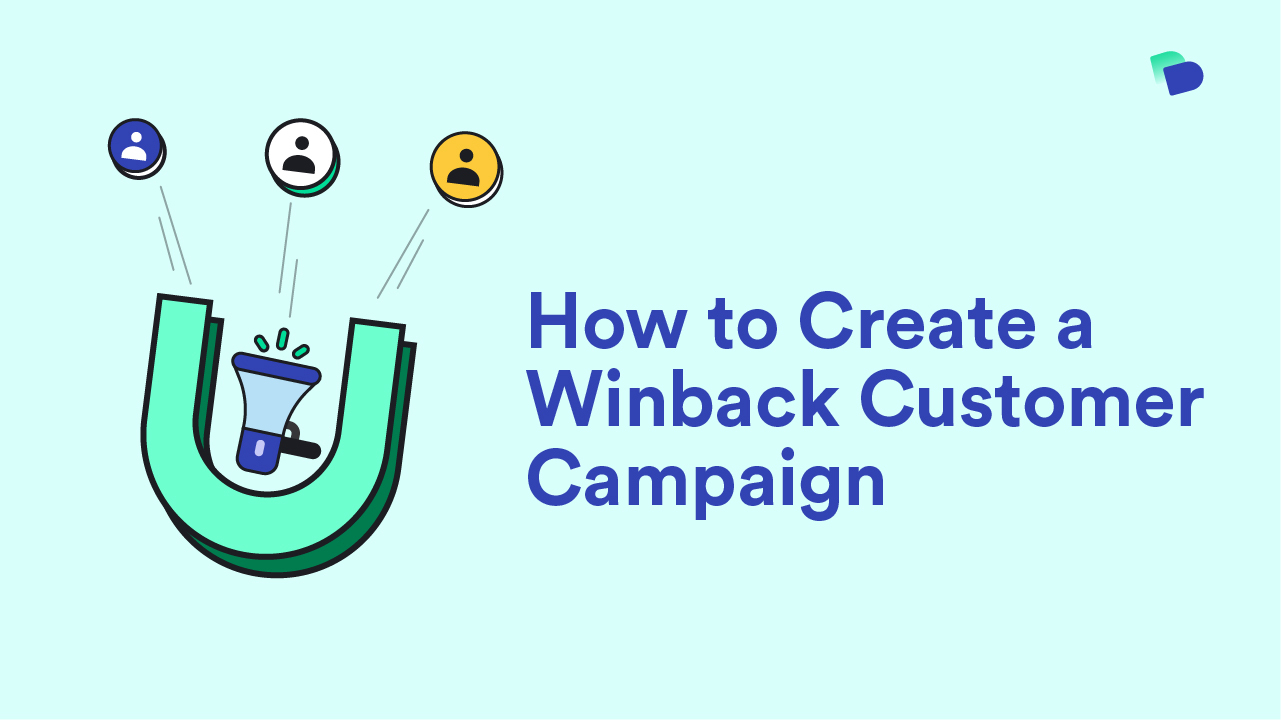There are many takes on the internet on how to reduce customer churn, we’ve written our share too. However, customer churn is inevitable. But it’s nothing to sulk too long for. A win-back customer campaign can help recover lost customers.
In this article, I share what a win-back campaign is, how to create one, and how Bunce, our customer engagement tool plays a role in reactivating lost customers.
What is a Winback Customer Campaign?
A win-back customer campaign is a series of marketing campaigns you create to recover or reactivate lost customers. This strategy is activated when customer retention strategies fail.
A win-back customer campaign is slightly different from a customer reactivation strategy. A customer reactivation strategy aims to re-engage inactive customers–customers who are on your platform but haven’t taken any action in months.
If a customer reactivation strategy isn’t put in place, these customers will eventually churn. And win-back campaigns are more expensive than customer retention.
Why a Winback Customer Campaign is Important
Besides reigniting customer engagement, a win-back customer campaign is important for the following reasons.
1. Extends Customer Lifetime Value
Customer lifetime value is an important business metric that shows how much a customer has spent with your brand over time. It also reveals how loyal customers are to your product. A lost customer means lost revenue for the brand. If done well, a win-back campaign reengages lost customers, extends their customer lifetime value, improves business revenue and gives a second chance for the brand to build customer trust.
2. It Helps you Understand Why Customers Leave
Win-back campaigns can provide valuable insights into why customers disengage in the first place. By analyzing campaign responses and engagement, you can identify areas for improvement and prevent future customer churn.
If your win-back strategy is carefully planned and executed, reactivating lost customers becomes a win for both you and the customers–you get a chance to rebuild a connection with your customers and they get the opportunity to engage with your product and derive value that solves a need for them.
How to Create a Winback Customer Campaign
Bill Gates, former CEO of Microsoft said,
Your most unhappy customers are your greatest source of learning
A win-back customer campaign is not only a period to get back lost customers but also a period to learn more about your customer needs. I share 6 tips to help you create a successful win-back customer campaign.
1. Analyze Customer Data to Identify and Segment Inactive Customers
Customer data can serve as a source of truth to know why customers churned and at what point they churned. To win back customers, look into your customer data and figure out their behavioral patterns before they churned. You can then segment customers based on your observations and using the recency, frequency, and monetary value (RFM) method. This shows how recent or frequent a customer interacted with your product and the monetary value of customers. Doing this helps you to know your active, initiative customers, and customer worth.
For example, customers who were once active before they churned, customers who did not engage your product after the first month and based on other criteria. Customer data platforms like Bunce can help you track where customers drop off.
Collecting customer feedback also helps you set up a strategic win-back customer campaign.
Bolaji Anifowose, Head of Partner Marketing at Distrobird said this about activating churned customers,
For customer churn in a B2B context, you want to find out why they stopped paying. There could be many reasons, for example, customers that have been paying for a year and stopped. When you reach out to them you want to conduct a customer interview. It could be a customer success person or an account manager but, I’ll recommend a product marketing person to manage the customer interview.
If they switched to another product, you want to find out if it’s the price point, a feature or complexity of the product. You want to do this across all your churned customers. At scale, you want to do a survey. If you do this, you’ll get a lot of insight to improve your marketing. When you get all this feedback, you may want to set up a discount to try to win them back.
If it is complexity of product, make your help doc more actionable or do more tutorial videos. The product marketing team has to own these efforts in collaboration with the customer success teams.
If it’s a thing of price, you want to know what you can do about that and know the kind of customers that are best fit for your product, at the end of the day, you can’t always compete on price.
Analyzing customer data gives you feedback for your next action in your customer recovery process.
2. Set up a Win-back Campaign
When you have analyzed your data and segmented your win-back customers, target messages specific to each customer segment and set an automation flow. This automation flow should be a sequence of emails or messages you intend to use to win back customers. It could be a 4 sequence email following this pattern for a fintech platform:
- New updates win-back customers may find interesting. Or feedback implemented based on the common issues that caused a drop-off
- An email inviting customers to try a new product with exciting discounts.
- A reminder to try out the new features and exciting savings/investment plans with discounts
- An email informing win-back customers that they can always return to the platform when they are ready. This should happen only when win-back customers don’t convert with previous emails.

Besides email, you can target social ads to these customer segments.
3. Personalized Messages
Personalization is key in a win-back customer campaign. It’s a solid way to capture interest. This goes beyond first-name email personalization to creating messages that resonate with their journey before they dropped off. Here’s an example of a personalized message:
Hello Stella
Restart your saving journey with the Infinite app, we made an exciting update to our savings plans and we’re ready to show you. Get 15% interest rate on the family and friends plan. Offer ends 10th of June 12:00pm.
4. Offer Incentives
Incentives are a good way to win back customers. Offer exciting discounts and referral bonuses. However, this is time-bound. The best time to win back customers is immediately after you notice a drop-off and can fix the reason for the drop-off. When they use a competitor brand, it becomes tougher to win them back.
5. Automate Your Win-back Campaign
Automation saves time and creates a seamless flow to engage your customers appropriately. Automating your campaign ensures you target the right customer at the right time through the right channels.
In your automation, factor in the sequence flow to engage customers who return differently from customers who don’t. This ensures each customer gets relevant messages based on their engagement with your campaign.
6. Analyze Results from the Win-back Campaign
Your goal is to win back customers, so at the end, you want to know how many customers took action, and at what point some showed interest and dropped off again. This gives you feedback on what worked and what didn’t and allows you to sieve your customer database to let go of customers with no likelihood of returning.
Your win-back customer campaign may not turn out how you anticipated and that’s okay, you can fall back to building strong customer retention and acquisition strategies.
Using Bunce to Create a Winback Customer Campaign
Bunce is a customer data platform that gives you real-time insight into your customer data like payment data from different data sources, behavioral data, and geographical and demographic data so you can target customers with relevant and highly personalized messages across multiple channels.
Bunce helps you manage your customer lifecycle increasing customer retention and lifetime value. You can track customer engagement and discover active and inactive customers, at risk of churn customers so you can re-engage them.
In the case of customer churn, you can set up a win-back campaign on Bunce and target customers across various channels like Email, In-app, and Social ads.
Whether you want to create a win-back customer campaign or manage your customer engagement better, sign up on Bunce now and improve your customer lifetime value.

